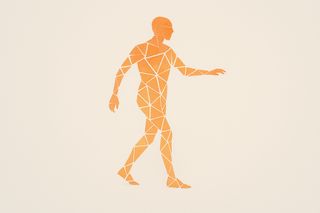This is Part 2 of a series. While this post stands on its own, do read Part 1: How Individual Beliefs Become Organizational Behavior first if you'd like a better understanding of the foundation.
On the night of April 14, 1912, the RMS Titanic, the largest ship ever built and a marvel of industrial-age technology, struck an iceberg and sank in the North Atlantic. The disaster is often remembered as an archetypal story of hubris, but the truth is more systemic and far more relevant to the systems we live in today. The sinking was more than the sum total of a few bad decisions; it was the inevitable outcome of a system that had become a victim of its own success. The same forces that made the transatlantic shipping industry a triumph of modern engineering and commerce also made it blind to the catastrophic failure that lay ahead.
The rigidity emerged from a series of mutually reinforcing successes. Decades of engineering progress, from wooden hulls to steel, created a powerful belief that modern ships were fundamentally safe from catastrophic failure. This design overconfidence led to choices—like watertight bulkheads that didn't extend all the way up—that were considered "good enough" for any expected accident. This sense of security was amplified by operational success. Transatlantic crossings had become so reliable that ignoring ice warnings to maintain speed was standard procedure, not recklessness. The system's rules and norms had become rigid, unable to adapt even when faced with clear evidence of unusual danger.
This operational complacency was reinforced by commercial and regulatory success. The shipping lanes were a huge commercial triumph, driven by competition in speed and luxury. Since safety was considered a "solved problem," it wasn't a competitive advantage. Providing more lifeboats than legally required was an unnecessary expense that would clutter the valuable deck space reserved for first-class passengers. This flawed prioritization was enshrined in outdated regulations. The British Board of Trade's safety rules, successful for a previous generation of smaller ships, had not kept pace with the explosive growth in ship size. The Titanic was fully compliant with the law, yet carried lifeboats for only half the people on board. The entire system—engineering, operations, commerce, and regulation—was a victim of its own past success, making it blind to the new dangers it had created.
Each of these successes created a feedback loop that reinforced a single, fatal idea: that the system was fundamentally safe. The engineers believed it, the crew acted on it, the owners profited from it, and the regulators certified it. The Titanic didn't sink because one person made a mistake. It sank because the entire system, from the drawing board to the captain's bridge, was working in perfect, rigid harmony to sail directly into an iceberg.
The entire system—engineering, operations, commerce, and regulation—was a victim of its own past success, making it blind to the new dangers it had created.
This is the first failure mode of all living systems: suicide by stability. When a system's self-reinforcing success makes it too rigid to adapt, it becomes a prisoner of its own history, unable to see the iceberg dead ahead. But this is only half the story. To survive, systems must balance this stabilizing force with a second, opposite force: variation. Without it, they die. With too much of it, they die differently.
From Static Diagrams to Living Networks #
When we look at an organizational chart or a belief system diagram, we're seeing a static snapshot—a frozen moment in time. But these systems aren't static. They're alive, constantly balancing two fundamental forces that determine their survival: self-stabilization and variation.
To understand how these systems work, we need to distinguish between their two core components: the substrate and the substance.
- The Substrate is the physical machinery of the system: the people, the networks they form, the incentives that guide them, and the competitive landscape they operate in. It's the 'how' ideas spread and persist.
- The Substance is the content itself: the ideas, beliefs, and logical connections that form a coherent worldview. It's the 'why' certain ideas are compelling and self-reinforcing.
Systems persist through two fundamental forces that operate across both dimensions: self-stabilization and variation. Self-stabilization creates coherence and maintains existing structure, while variation introduces the evolutionary jitter that allows adaptation. Both forces operate simultaneously in the substrate (through networks, incentives, and competitive dynamics) and in the substance (through semantic coherence and logical relationships).
| Dimension | Self-Stabilization | Variation |
|---|---|---|
| Substrate | Positive: Networks create reliable coordination, incentives align behavior, established players provide stability Negative: Entrenched power structures, resistance to change, cognitive entrenchment |
Positive: New perspectives drive innovation, external pressure forces adaptation, diversity strengthens resilience Negative: Coordination breakdown, loss of shared identity, competing agendas |
| Substance | Positive: Ideas become self-reinforcing through internal logic, semantic frameworks provide coherence, conceptual stability enables deep understanding Negative: Ideas become rigid and resistant to new information, semantic frameworks become dogmatic, conceptual coherence prevents evolution |
Positive: New ideas emerge and integrate, semantic frameworks evolve to incorporate new information, logical relationships deepen understanding Negative: Loss of conceptual coherence, fragmentation of shared meaning, competing worldviews |
Information systems persist not because of some conscious intent, but because of the same forces that drive biological evolution: thermodynamics and competition. In any competitive environment, systems that can better capture resources, reproduce themselves, and resist threats will tend to persist. The emergent behavior isn't some conscious entity making decisions—it's the result of these basic competitive dynamics playing out over time.
A company's "culture" emerges from the interplay of market pressures, individual personalities, historical accidents, and technological constraints—creating patterns that no single person could have designed. A government's "agenda" isn't set by some master planner, but it's also not random—it's the complex interplay of laws, institutions, interest groups, and electoral dynamics, where individual actors pursue their own goals within the constraints of the system.
Self-Stabilization creates coherence through reinforcing feedback loops that maintain existing structure. These loops operate across both substrate and substance dimensions, each strengthening the system's persistence. Here are a few examples of such loops:
When a system provides value, people invest in it, which attracts more people, which increases its value further. When it becomes part of someone's identity, they defend it, which strengthens the community, which reinforces the identity. When people use it repeatedly, it becomes automatic, making alternatives feel unnatural and effortful. These feedback loops create what appears to be intentional behavior at the system level. The system "wants" to survive and grow, not because of a conscious entity, but as a logical consequence of its structure.
These feedback loops create what appears to be intentional behavior at the system level. The system "wants" to survive and grow, not because of a conscious entity, but as a logical consequence of its structure.
Variation introduces evolutionary jitter that allows systems to adapt to changing environments. This adaptation manifests across both substrate and substance dimensions:
Substrate variation includes new ideas emerging through experimentation, external pressure creating adaptation, and the natural diversity of human thought and behavior. Transmission methods innovate to reach new audiences, and institutional support evolves to maintain relevance. Substance variation involves core principles remaining stable while surface features adapt to new contexts, semantic frameworks evolving to incorporate new information, and logical relationships shifting as understanding deepens.
The interplay between self-stabilization and variation creates the behavior of a living network that appears to have intentions and goals, even though no individual component does.
Consider how all of this plays out in open-source software projects, where we can see both substrate and substance dynamics at work. When a project like React or Linux faces new pressures—new use cases, competing frameworks, or changing user needs—the community experiments with new approaches.
graph TD
%% ────────── External Pressure ────────────────
P["New Pressures / Opportunities"]
Collapse["Hard Fork / Obsolescence"]
Persistence["Continued Persistence"]
%% ────────── Adaptive Engine (Explore) ────────
subgraph "Adaptive Engine"
direction LR
AE1["Community Experiments"] --> AE2["Prototype Plugins / Forks"]
AE2 --> AE3["Early Adopters Test"]
AE3 --> AE1
end
%% ────────── Stabilisation Engine (Amplify) ──
subgraph "Stabilisation Engine"
direction LR
SE1["Delivers Proven Value"] --> SE2["Wider Adoption & Loyalty"]
SE2 --> SE3["More Maintainers / Funding"]
SE3 --> SE4["Higher Switching Cost / Habit"]
SE4 --> SE1
end
subgraph "Information System"
direction LR
F{"Fits Core Project?"}
Gap["Reality Gap Widens"]
System["Current Framework Core"]
M["Current Metrics & Incentives"]
end
%% ────────── Cross-Links ──────────────────────
P --> AE1
System --> AE1
%% candidates go to gate
AE2 --> F
F -- "Yes" --> SE1
F -- "Maybe" --> AE1
F -- "No" --> Gap
Gap --> Collapse
SE1 --> Persistence
%% success updates metrics
SE3 -.-> M
%% metrics inform the gate
M -- "Guides Fit" --> F
%% success rewrites the core
SE3 -.-> System
Substrate dynamics drive the experimentation: maintainers with different technical backgrounds propose solutions, users with diverse needs create pressure for adaptation, and the competitive landscape of frameworks creates selection pressure. Substance dynamics determine which experiments succeed: solutions that fit the project's core architectural vision and semantic coherence get integrated, while those that don't remain as forks or fade away.
graph LR
NP["New Use Case: Mobile Development"]
subgraph "Existing Architecture"
EA1["React.Component"]
EA2["JSX Syntax"]
EA3["Props System"]
EA4["Virtual DOM"]
EA5["NPM Ecosystem"]
end
subgraph "Consumers"
C1["React Apps"]
C2["React Native"]
C3["Next.js"]
C4["Gatsby"]
end
subgraph "Good Fit"
GF1["React Native Components"]
GF2["Mobile-Specific Props"]
GF3["Platform Bridge"]
end
subgraph "Poor Fit"
PF1["Rust Rewrite"]
PF2["Custom Syntax"]
PF3["No JSX Support"]
end
NP -.-> GF1
NP -.-> PF1
%% Good fit connections
GF1 --> EA1
GF2 --> EA3
GF3 --> EA4
%% Poor fit connections
PF1 -.-> EA2
PF2 -.-> EA3
PF3 -.-> EA1
%% Consumer impact
PF1 -.-> C1
PF1 -.-> C2
PF1 -.-> C3
PF1 -.-> C4
classDef existing stroke:#e3f2fd,stroke-width:2px
classDef consumers stroke:#f3e5f5,stroke-width:2px
classDef goodfit stroke:#e8f5e8,stroke-width:2px
classDef poorfit stroke:#ffebee,stroke-width:2px
class EA1,EA2,EA3,EA4,EA5 existing
class C1,C2,C3,C4 consumers
class GF1,GF2,GF3 goodfit
class PF1,PF2,PF3 poorfit
The successful adaptations strengthen the project's position, attracting more maintainers and users, which in turn provides more resources for future adaptation. But if the gap between the project's capabilities and reality grows too wide, the system risks obsolescence or hard forks.
This explains why technical decisions often don't go to the "best" technical solution. A brilliant Rust rewrite might be technically superior in someone's particular case, but if it breaks the substrate—the existing ecosystem, developer habits, and institutional knowledge—it will fail regardless of its technical merits. The substance (technical architecture) must fit the substrate (human and institutional constraints) for any change to succeed.
The First Death: Suicide by Stability (The Equilibrium Becomes a Prison) #

When self-stabilization dominates variation, systems become trapped in their own success. The very mechanisms that once ensured survival—the feedback loops that created stability and coherence—become prisons that prevent adaptation. This is maladaptive rigidity: the system's structure becomes so entrenched that it cannot respond to environmental changes.
Kodak: The Self-Destructive Logic of Film #
Kodak's story exemplifies how stability can become a death sentence, with both substrate and substance dynamics reinforcing the same destructive pattern. The company that invented digital photography in 1975 chose to protect its film business rather than cannibalize it. Kodak's organizational structure had evolved around film manufacturing, distribution, and processing—a massive, profitable system that employed thousands and generated billions in revenue.
Substrate feedback loops were powerful: film sales funded research, research improved film quality, better film increased sales, which funded more research. The identity integration was deep—Kodak employees saw themselves as part of a company that "preserved memories" through film. The cognitive entrenchment was complete—every process, every decision, every metric was optimized for the film business.
Substance feedback loops reinforced this pattern: the internal logic of film photography became self-reinforcing. The idea that "photography equals film" became so deeply embedded in Kodak's conceptual framework that digital alternatives appeared as threats to photography itself, not as evolution of the core concept.
graph TD
FS["Film Success"] --> FM["Film Metrics Look Good"] --> MF["Management Doubles Down on Film"] --> FR["More Resources for Film"] --> FS
DT["Digital Threat"] -.-> MF
MF -.-> DF["Digital Funding Shrinks"]
classDef loop stroke:#e8f5e8,stroke-width:2px
classDef negative stroke:#ffebee,stroke-width:2px
class FS,FM,MF,FR loop
class DT,DF negative
When digital photography emerged, the organizational structure that had made Kodak successful now made adaptation impossible. Shifting to digital would have required dismantling the very systems that defined Kodak's success. Kodak's organizational graph was working exactly as designed—it was protecting the stability of the existing, proven system.
But more importantly, within that system's logic, film appeared to be the better option. The feedback loops created a reality where film metrics looked good, bonuses were guaranteed, and digital seemed like a risky gamble with no upside. The competitive defense loop meant that threats to film actually strengthened film's position. The process optimization loop made everything else seem inefficient compared to the well-oiled film machine.
The environment had changed, but the system couldn't change with it because every signal within the system pointed toward doubling down on film.
Within the system's logic, film appeared to be the better option. Every signal pointed toward doubling down on what had worked before. The environment had changed, but the system couldn't see it.
This pattern repeats throughout history. The Polish-Lithuanian Commonwealth's Liberum Veto system that required unanimous consent for any major decision worked brilliantly during its rise, but became a weapon of paralysis as neighboring powers grew stronger. The late Roman Republic's refusal to reform its political institutions as the empire grew. The British Empire's inability to adapt to decolonization movements. In each case, the system's stabilizing mechanisms—the feedback loops that had created success—became the very forces that prevented adaptation.
The critical realization is that maladaptive rigidity isn't a failure of intelligence or planning. It's the system working exactly as designed. The self-stabilization mechanisms are doing their job perfectly—maintaining coherence, preserving identity, reinforcing existing patterns. But when the environment changes faster than the system can adapt, those same mechanisms become a prison. This is the same pattern we see in how ideologies compete and adapt—systems that were once successful become trapped by their own success.
The system isn't making a mistake. It's following the logic that made it successful. The problem is that the logic that worked in one environment becomes destructive in another.
Maladaptive rigidity isn't a failure of intelligence—it's the system working exactly as designed. The very mechanisms that created success become the prison that prevents adaptation.
The Second Death: Dissolution into Anarchy (The Loss of All Equilibrium) #

When variation overwhelms self-stabilization, systems lose their coherence and disintegrate into chaos. This is the opposite problem of maladaptive rigidity: instead of being trapped by their own success, systems become victims of their own flexibility. Without sufficient anchoring mechanisms to maintain identity and continuity, they dissolve into competing fragments, each pursuing its own agenda without coordination or shared purpose.
The Roman Civil Wars: When Structure Collapses #
The collapse of the Roman Republic provides the archetypal example of how systems can disintegrate when they lose their stabilizing mechanisms, with both substrate and substance dynamics contributing to the breakdown. The Republic's political system had evolved over centuries, with complex checks and balances designed to prevent any single individual or faction from gaining too much power. But as the Republic expanded and faced new challenges, these stabilizing mechanisms began to break down.
Substrate breakdown occurred as the Republic's institutional structure failed to adapt to imperial scale. The Gracchi brothers' attempts at reform in the 2nd century BCE marked the beginning of a pattern where political violence became normalized. The Senate's traditional authority eroded as military commanders gained independent power bases through their conquests. The old rules of political competition—respect for constitutional procedures, deference to established institutions, commitment to the common good—gave way to a system where might made right.
Substance breakdown followed as the Republic's conceptual framework lost coherence. The idea of "res publica" (public thing) that had unified Roman identity became fragmented as competing factions developed their own interpretations of what the Republic should be. There was no longer a shared understanding of legitimate authority or proper governance.
What followed was a century of civil wars, as competing factions fought for control without any shared framework for resolving disputes. Marius vs. Sulla, Caesar vs. Pompey, Octavian vs. Antony—each conflict further weakened the Republic's institutions and made the next conflict more likely. The system had lost its ability to maintain order because the variation (new political actors, new military technologies, new economic realities) had overwhelmed the stabilizing mechanisms (constitutional procedures, social norms, institutional authority).
The Republic became the opposite of rigid—it became chaotic. There was no coherent system anymore because there was no coherent structure. The behavior was disintegration, not adaptation.
The Pattern of Systemic Collapse #
This pattern of dissolution appears in many contexts. The collapse of the Soviet Union, where the sudden removal of central authority led to competing power centers and regional conflicts. The fragmentation of Yugoslavia, where ethnic and religious identities overwhelmed the stabilizing mechanisms of federal governance. The breakdown of corporate cultures during rapid expansion, where new employees and new markets introduce so much variation that the original identity and purpose become lost.
The fundamental principle is that systems need both variation and stability to survive. Too much variation without sufficient anchoring mechanisms leads to chaos. The feedback loops that create coherence break down, and the system loses its ability to coordinate action or maintain identity.
This is why the system collapses—there's no coherent structure left to exhibit organized behavior. Instead of a living network with its own patterns, you get competing fragments, each pursuing its own agenda without coordination or shared purpose.
The Vicious Cycle of Collapse #
The two deaths are not isolated fates; they can be part of a vicious cycle that makes recovery increasingly difficult. When a system loses coherence and becomes chaotic, it often creates a desperate hunger for order, making society vulnerable to overcorrection into extreme rigidity. The chaos of the Roman Republic's civil wars led directly to the authoritarian stability of the Empire under Augustus. The collapse of the Weimar Republic's democratic institutions created the conditions for the rise of Nazi Germany. The French Revolution's descent into the Terror eventually led to Napoleon's authoritarian rule.
Conversely, a system that becomes too rigid and brittle will not bend, but shatter into chaos when external pressure becomes overwhelming. The Polish-Lithuanian Commonwealth's paralysis eventually led to its partition and disappearance from the map. Kodak's rigid focus on film eventually led to bankruptcy and the loss of its core business. The Soviet Union's inability to adapt to changing economic and political realities led to its sudden collapse and the chaos of the 1990s.
This asymmetric relationship reveals why finding stable equilibrium is so difficult. Systems that lose coherence tend to overcorrect toward rigidity, while systems that become rigid tend to break rather than overcorrect toward chaos. The path to survival lies in avoiding either extreme, developing mechanisms that can maintain the delicate balance between self-stabilization and variation—enough structure to maintain coherence and identity, enough flexibility to adapt to changing environments.
The path to survival lies in avoiding both extremes: enough structure to maintain coherence, enough flexibility to adapt. Too much of either leads to collapse.
Rebalancing Systems in Critical States #
When systems tip into critical states—whether through maladaptive rigidity or loss of coherence—the question becomes: Can they be rebalanced? The answer depends on whether the system can restore equilibrium between self-stabilization and variation without falling into the same traps that caused the original failure, or overcorrecting into the opposite failure mode.
Augustus and the Roman Empire: The Archetypal Rebalancing #
The Roman Republic's collapse into civil war wasn't just a political crisis—it was a systemic failure of the Republic's organizational template. The Republic had evolved as a system of checks and balances designed for a city-state, but as Rome expanded into a Mediterranean empire, the same mechanisms that had created stability became sources of paralysis and conflict.
The core problem was that the Republic's decision-making structure couldn't handle the scale and complexity of imperial governance. The Senate, designed for consensus among a small elite, became paralyzed by factional disputes. The annual magistracies, meant to prevent tyranny, created constant turnover that prevented long-term planning. The military, increasingly loyal to individual commanders rather than the state, became a tool for political competition rather than national defense.
When Augustus consolidated power through careful political maneuvering and Senate grants of extraordinary authority, he faced a fundamental redesign challenge: how to create a system that could coordinate imperial governance while maintaining enough republican legitimacy to secure broad acceptance. His solution was the Principate—a hybrid structure that preserved republican forms while concentrating real authority.
The transformation can be visualized as a shift from destructive, self-reinforcing loops to stabilizing, self-reinforcing loops:
graph TD
%% Republic in Crisis
RM1["Scale Mismatch"] --> RM2["Institutional Failure"] --> RM3["Civil War"] --> RM1
%% Augustan Rebalance
AL1["Central Coordination"] --> AL2["Stable Authority"] --> AL3["Efficient Governance"] --> AL1
%% Transition
RM3 -.-> AL1
classDef bad stroke:#ffebee,stroke-width:2px
classDef good stroke:#e8f5e8,stroke-width:2px
class RM1,RM2,RM3 bad
class AL1,AL2,AL3 good
The key change was creating a system where Augustus held multiple traditional offices simultaneously (consul, tribune, censor) while adding new institutions that provided coordination without appearing dictatorial. The Praetorian Guard provided security, the imperial bureaucracy handled administration, and the Senate continued to meet but with Augustus as its leading member. This created the appearance of republican continuity while establishing clear decision-making authority.
The ghost in this new system was fundamentally different—more centralized and stable than the Republic, but still capable of adaptation. The trade-off was the loss of republican self-government, but this appeared preferable to continued civil war. Augustus had successfully rebalanced a system that had lost coherence by introducing new stabilizing mechanisms while preserving enough of the old forms to maintain legitimacy.
Other historical examples show the difficulty of successful rebalancing. The Polish-Lithuanian Commonwealth's attempts at reform came too late and were too weak to prevent its destruction. Deng Xiaoping's economic reforms in China succeeded by introducing variation in specific domains while preserving stability in others. But success stories in this domain are exceptions—most systems that tip into critical states tend to get worse, until they are ultimately either replaced, or fractured and reassembled, which is why successful rebalancing is so rare.
The essential understanding is that rebalancing requires understanding not just the symptoms of the failure mode, but the underlying dynamics that created it. Systems that have tipped into rigidity need mechanisms to introduce variation. Systems that have lost coherence need mechanisms to restore stability. But the rebalancing process itself must be carefully managed to avoid overcorrection—swinging too far in the opposite direction and creating new problems.
But what if we could design systems from the ground up to avoid these failure modes entirely? What principles would guide the architecture of belief systems that serve human flourishing rather than their own survival?
The goal, then, is not to build a perfect fortress, impervious to change—because that would be a prison. Nor is it to live in an open field of pure possibility—because that would soon become a wasteland. The art of building resilient systems, and resilient lives, is the art of the gardener: to cultivate a space with enough structure to grow, enough stability to endure the seasons, and enough openness to let the light in.
Next: Part 3 explores how to architect resilient belief systems that balance stability with adaptation, serving people rather than patterns.



